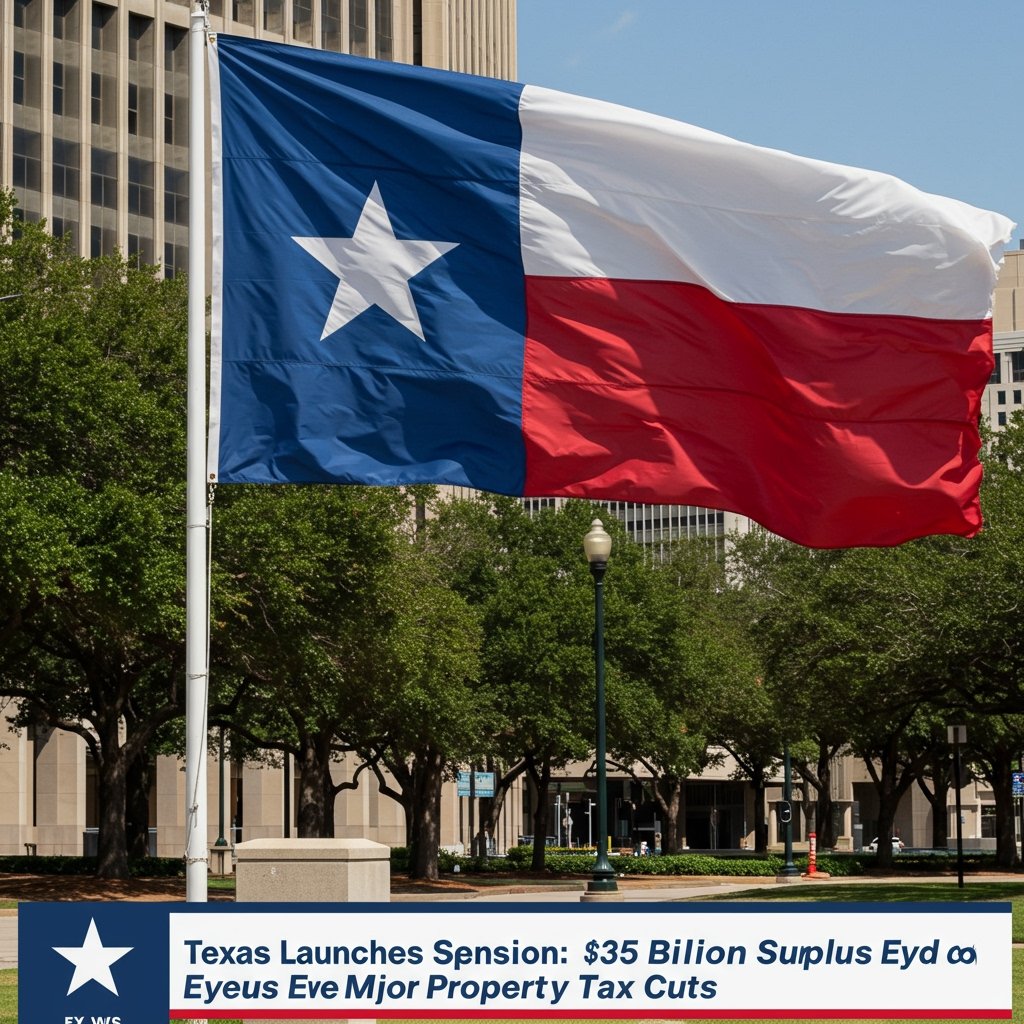Texas Legislature Convenes Special Session Focused on Property Tax Relief
Austin, Texas – In a significant legislative move aimed at providing substantial relief to Texas homeowners and businesses, Governor Greg Abbott formally convened a special legislative session in Austin on Friday, February 14, 2025. The singular focus of this extraordinary session is the pressing issue of property tax reduction across the state. This legislative undertaking represents a direct response to the ongoing burden of rising property taxes and leverages the state’s robust fiscal health, specifically its projected $35 billion budget surplus.
Unresolved Business from the 89th Legislative Session
The impetus for this special session stems directly from unresolved property tax matters left pending at the conclusion of the 89th Legislative Session. While progress was made on various fronts during the regular session, a comprehensive, statewide solution for lowering property tax rates, particularly those levied by school districts for maintenance and operations (M&O), remained elusive. These M&O taxes constitute a significant portion of a property owner’s tax bill, and addressing them is seen as crucial to providing meaningful relief. The special session has been called with a clear mandate to achieve this goal, utilizing the unprecedented state surplus as the primary funding mechanism.
The Strategy: Property Tax Rate Compression
The central strategy dominating the special session’s agenda is property tax rate compression. This mechanism involves the state using its funds – in this case, a portion of the $35 billion surplus – to ‘buy down’ local school district property tax rates. By injecting state money into school funding, the need for local districts to rely as heavily on property taxes for their M&O budgets is reduced, thereby allowing them to lower their tax rates. The expectation is that this approach will result in a direct and tangible reduction in property tax bills for property owners across Texas.
Key Legislative Proposals Introduced
Several key pieces of legislation have quickly emerged as the primary vehicles for achieving property tax compression. Among these are Senate Bill 1, championed by Lieutenant Governor Dan Patrick, and House Bill 2, advanced by Speaker Dade Phelan. While both bills share the overarching goal of property tax reduction through rate compression, they may contain differing specific approaches or additional provisions.
Senate Bill 1, as put forth under the leadership of Lieutenant Governor Patrick, is expected to lay out the Senate’s plan for how the state surplus will be allocated to achieve significant compression of school M&O tax rates. Details typically include the specific dollar amount or percentage of rate reduction the state will fund and the mechanism for distributing these funds to school districts.
In parallel, House Bill 2, guided by Speaker Phelan, represents the House’s legislative proposal. While also focusing on property tax rate compression, the House version may include different formulas or potentially pair the rate reduction with other forms of property tax relief, such as raising the state’s homestead exemption. Raising the homestead exemption excludes a larger portion of a home’s value from taxation, providing direct savings to homeowners.
The interplay and eventual reconciliation between SB 1 and HB 2 will be a critical aspect of the special session’s proceedings, as both chambers must agree on a final legislative package to send to the Governor’s desk.
Debate Over Mechanism for Permanent Reductions
While there is broad consensus on the need for property tax relief, debate persists regarding the most effective and permanent mechanism for achieving statewide reductions. The primary focus of this session is undoubtedly on rate compression, leveraging the surplus for immediate cuts. However, discussions continue around alternative or complementary approaches, most notably proposals for appraisal caps. Appraisal caps would limit the annual increase in a property’s appraised value for tax purposes, thus slowing the growth of tax bills even if rates remain constant or increase slightly.
A key point of contention in the debate is whether rate compression, funded by a potentially finite surplus (or future state revenues), offers permanent relief, versus whether appraisal caps provide more enduring predictability for property owners by limiting the taxable base. Proponents of compression argue it provides a direct, immediate reduction, while advocates for caps emphasize long-term protection against valuation spikes. The legislative challenge is to find a mechanism that is not only effective in the short term, utilizing the current surplus, but also provides sustainable, statewide property tax relief for the future.
Parallel State Agency Efficiency Drive
Providing a complementary fiscal context to the property tax discussions, Governor Abbott also issued Executive Order GA-48 on February 10, 2025, just days before the special session convened. This executive order mandates a drive for increased efficiency and reduced spending across state agencies. The order requires agencies to review their budgets, identify potential savings, and propose measures to optimize operations. This parallel effort signals a commitment to fiscal responsibility on the state level, aiming to ensure that state government operates as leanly as possible while simultaneously discussing the allocation of significant surplus funds towards property tax relief. The Executive Order reinforces the message that while the state is in a strong financial position, responsible management of taxpayer dollars remains a priority.
As the special session unfolds in Austin, lawmakers face the challenge of navigating these complex proposals and debates under a tight timeline. The goal remains clear: to deliver substantial, permanent property tax relief to the citizens and businesses of Texas, capitalizing on the state’s current financial opportunity to ease the burden of one of the most significant costs faced by property owners.






